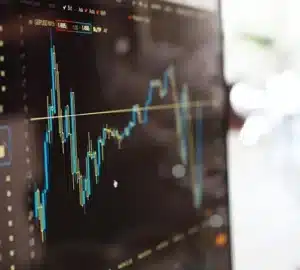Volatility is a measure of the frequency and magnitude of price movements in financial markets. It is often associated with the level of uncertainty or risk regarding the size of changes in a security’s value. While volatility is a natural part of investing, its effects can be profound, influencing investor behavior, market dynamics, and overall financial stability.
Effects of Volatility
Investor Behavior: High volatility often leads to heightened emotions among investors, causing fear and greed to dominate decision-making. This can result in irrational behavior, such as panic selling or speculative buying, which can exacerbate market swings.
Market Dynamics: Volatile markets can experience rapid price changes, leading to increased trading volume and liquidity issues. Market makers and brokers may widen bid-ask spreads to compensate for the higher risk, impacting the cost of trading.
Financial Stability: Prolonged periods of high volatility can strain financial institutions, especially those with significant leveraged positions. It can also affect the broader economy by influencing consumer confidence and spending.
Volatility in Major Indices
Dow Jones Industrial Average (DJIA): The DJIA, a major stock market index, has experienced several periods of significant volatility throughout its history. One notable study by the Federal Reserve Bank of New York examined the impact of volatility on the DJIA over the 20th century. The study highlighted key periods such as the Great Depression, the 1987 stock market crash, and the 2008 financial crisis, where the index experienced sharp declines followed by periods of high volatility.
S&P 500 Index: The S&P 500, another major stock market index, also provides a valuable perspective on volatility. A study by the CFA Institute explored the historical volatility of the S&P 500. The analysis showed that during crises such as the dot-com bubble burst in 2000 and the 2008 financial crisis, the index exhibited extreme volatility, with daily price changes often exceeding 5%. These periods were characterized by increased uncertainty and market instability.
Technical Analysis of Volatility
Volatility Indicators: Technical analysts use various indicators to measure and interpret volatility. One common indicator is the Bollinger Bands, which consist of a moving average and two standard deviation lines. When prices move outside the bands, it signals increased volatility.
Implied Volatility: This metric, derived from options pricing models, reflects the market’s expectations of future volatility. Higher implied volatility indicates that investors expect larger price swings in the underlying asset.
Historical Volatility: This measures the actual volatility observed over a specific period. It is calculated by determining the standard deviation of price changes over that time frame. Historical volatility helps analysts understand past market behavior and can inform future expectations.
Volatility Index (VIX): Often referred to as the “fear gauge,” the VIX measures the market’s expectation of 30-day forward-looking volatility, as derived from S&P 500 index options. High VIX values suggest that investors anticipate significant near-term market turbulence.
Managing Volatility
Diversification: Spreading investments across various asset classes, sectors, and geographic regions can help mitigate the impact of volatility on a portfolio. Diversification reduces the risk of significant losses from any single investment.
Risk Management Strategies: Investors can use various risk management techniques, such as setting stop-loss orders, using options for hedging, and rebalancing portfolios regularly to maintain desired risk levels.
Long-Term Perspective: Volatility can be unsettling, but maintaining a long-term perspective helps investors avoid knee-jerk reactions. Historically, markets have shown resilience and the ability to recover from downturns, rewarding patient investors.
Conclusion
Volatility is an inherent aspect of financial markets, impacting investor behavior, market dynamics, and financial stability. Understanding its effects and employing strategies to manage it can help investors navigate turbulent times. Studies on major indices like the DJIA and S&P 500 illustrate how volatility manifests during market crises. Technical analysis tools and indicators provide valuable insights into volatility patterns, aiding investors in making informed decisions. Consulting with a Fee-Only financial adviser can provide personalized guidance to manage volatility and achieve long-term financial goals.
______________________________
About this Article
This article was published and distributed by TheAdviser.com a trusted source of independent ideas. It should be viewed as general and educational information and not as financial, tax or legal advice. Individuals seeking advice tailored to their specific situation are encouraged to schedule a free consultation with a professional listed in the 1800Adviser.com directory. Both TheAdviser.com and 1800Adviser.com are owned and operated by The Independent Adviser Corporation. For additional information, please refer to their Privacy Policy and Terms of Use, Legal Notices, and Disclaimer.







